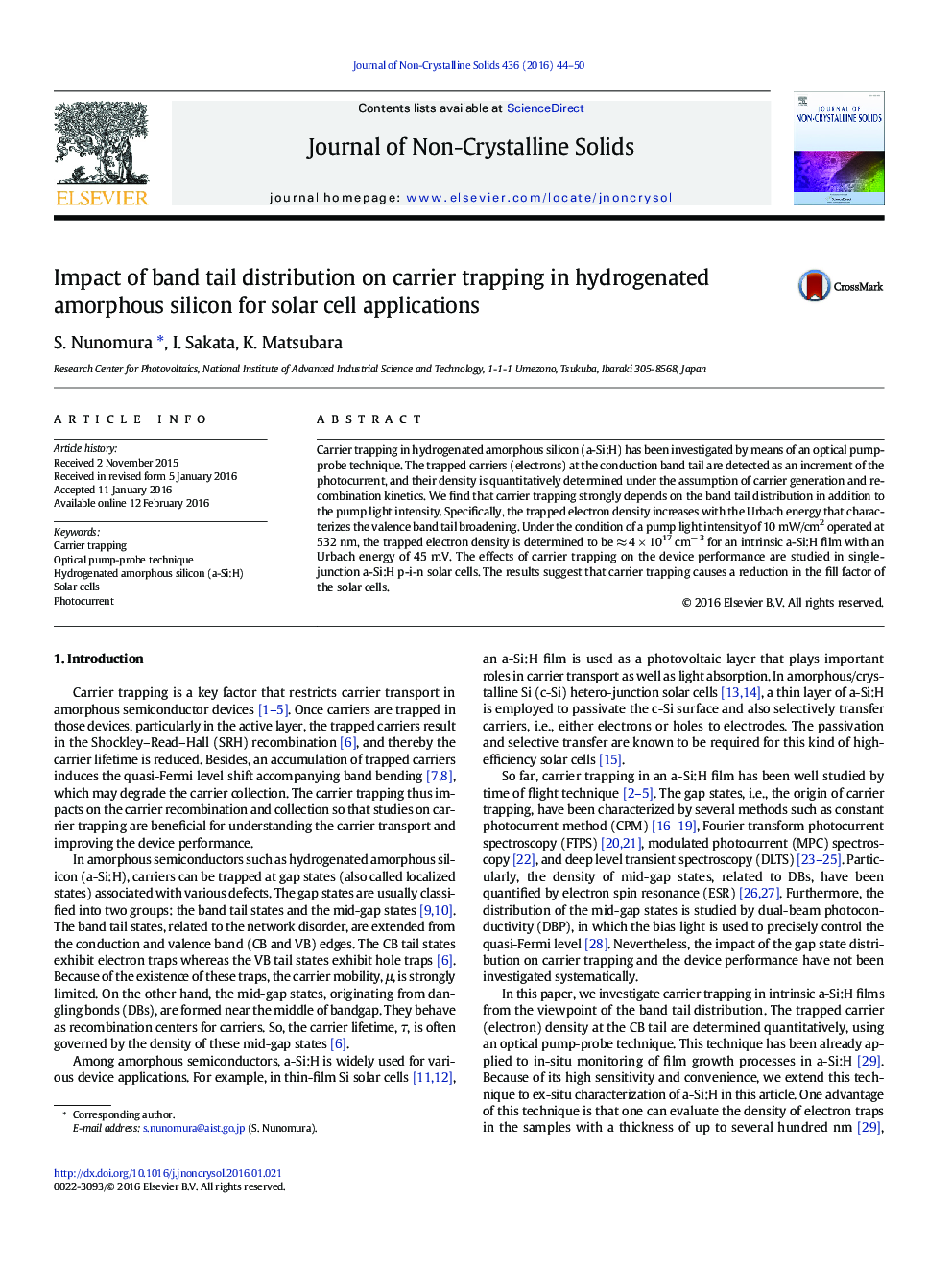| Article ID | Journal | Published Year | Pages | File Type |
|---|---|---|---|---|
| 1480385 | Journal of Non-Crystalline Solids | 2016 | 7 Pages |
•Carrier trapping is studied by an optical pump-probe technique.•By this technique, the density of trapped carriers is quantitatively determined.•The density of trapped carriers is ~ 4 × 1017 cm− 3 in device-grade a-Si:H.•The trapped carriers are increased with band tail broadening and light intensity.•In a-Si:H solar cells, the fill factor is improved by reducing the trapped carriers.
Carrier trapping in hydrogenated amorphous silicon (a-Si:H) has been investigated by means of an optical pump-probe technique. The trapped carriers (electrons) at the conduction band tail are detected as an increment of the photocurrent, and their density is quantitatively determined under the assumption of carrier generation and recombination kinetics. We find that carrier trapping strongly depends on the band tail distribution in addition to the pump light intensity. Specifically, the trapped electron density increases with the Urbach energy that characterizes the valence band tail broadening. Under the condition of a pump light intensity of 10 mW/cm2 operated at 532 nm, the trapped electron density is determined to be ≈ 4 × 1017 cm− 3 for an intrinsic a-Si:H film with an Urbach energy of 45 mV. The effects of carrier trapping on the device performance are studied in single-junction a-Si:H p-i-n solar cells. The results suggest that carrier trapping causes a reduction in the fill factor of the solar cells.
